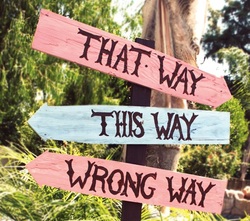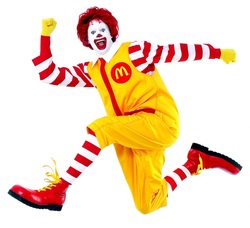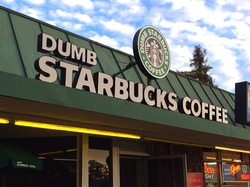 Which way is the right way? Src: http://blog.hwtm.com/2012/11/vintage-alice-in-wonderland-tea-party/
Which way is the right way? Src: http://blog.hwtm.com/2012/11/vintage-alice-in-wonderland-tea-party/ Apparently, Hobby Lobby International (the RC store, which I will simply refer to from here on out as "HLI") has been around longer than Hobby Lobby Stores ("HLS"). About 8 years to be exact. HLI opened its first shop in Tennessee in 1964 while HLI opened its first store in Oklahoma in 1972. Over the years, HLI grew from a single-retail store location to a thriving mail-order and online retailer business, with sales of at least $9 million. The same family owned HLI until 2003, when it was sold to a private equity firm. In 2009, a local business guy, Mark Cleveland, bought the company with goals to expand operations across multiple stores and sell more radio-controlled products (yeah, he's one of those small-scale, big-boy toys kind of guys, too.).
How could two companies, in virtually the same industry group, through practically the same avenues in the marketplace, reaching potentially overlapping consumers exist side-by-side for all those years without any kind of problems or misdirected consumers? Well, apparently they didn't, or at least nobody cared until Mr. Cleveland took over in 2009. Thereafter, problems seemed to pop-up like miniature RC helicopters flying around the room: customer complaints and inquiries directed to HLS, mis-directed web traffic, confused female customers who showed up to HLI stores looking for yarn instead of electronics, and so on. Given its smaller size and scale of operations, HLI took the brunt of the misdirected consumers, getting stiffed on keyword advertising on the internet and angry, confused customers who just wanted to buy wicker baskets.
This is a classic case of what us trademark attorneys call "reverse confusion". Reverse confusion occurs when one business (the junior user) uses a trademark that was first used by another business (the senior user) and where the junior user becomes more well-known than the first user. In regular consumer confusion (no, it isn't called "forward confusion"), a junior user is confused with the senior user. In this case, in essence, the junior user is free riding on the reputation of the senior user. In reverse confusion, the senior user loses the opportunity to control its own reputation and goodwill because the junior users swamps the market with its advertising and sales, so much so that consumers come to believe the senior user of the trademark is actually the junior user. In essence, then, reverse confusion occurs when a more powerful company uses the mark of a smaller, less powerful senior user.







 RSS Feed
RSS Feed